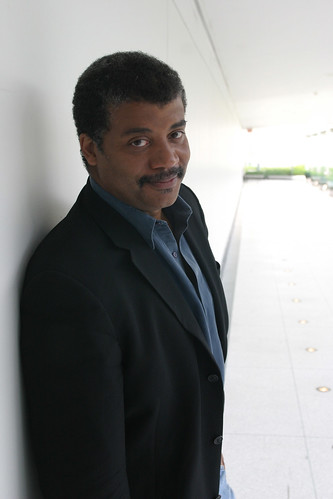The second episode that this reviewer has seen of Nova scienceNOW is much in the same vein as the first. In this case the specific stories interested me far more, but it still feels as though it is trying to be a far more “hip” version of Nova. Personally, though I enjoy it, I’m beginning to think of it as Nova scienceLITE or Nova ADD.
Don’t get me wrong, it’s not that the stories have less scientific merit than regular Nova (let’s face it, “Family That Walks on All Fours” pretty much hits rock-bottom in that regard); it's just that the stories have far less depth. Nova focuses on one specific story, it spends the full hour on only one topic. On the other hand, Nova scienceNOW does four topics over the course of an episode. This has advantages and disadvantages.
On the upside, if you don’t like a story that they’re doing, if something doesn’t interest you or you don’t appreciate the reporting, you don’t have to suffer through the entire thing. The flip side of this is that if you do like a story, if you do appreciate what they’re doing, if you want to see them get into more depth on something, you’re not going to be happy. During this episode of Nova scienceNOW, I found myself wanting to see more about two or three of the four stories that were presented.
First up in this episode is the story of a group of scientists looking into what caused the mass extinction that marked the end of the Permian era. Though there are apparently many theories, what seems most likely at this point, according to many of the scientists interviewed, is that the animals were poisoned due to greenhouse gases heating the oceans for a long enough period of time that deadly bacteria built up in the oceans and was eventually released into the atmosphere, killing the vast majority of life on the planet. Some of the scientists in the story seem to be simply relating their notions and others seem to be on the verge of using it as a springboard to talk about what we are doing to the planet. No one overtly says anything of that sort, but there are absolutely moments when the piece feels like it’s headed in that direction. Perhaps the scientists did go there and it was simply edited out.
The second story, my personal favorite, deals with the 1918 Flu Pandemic, or Spanish flu, that killed more than 50 million people worldwide. For those of you counting, that’s more than three times the number of people that died in World War One. Apparently this flu has some elements in common with the avian flu or bird flu and so a scientist recreated the Spanish flu in order to better study it. This was possible by extracting samples of the flu from dead WWI soldiers and then using some DNA reverse-engineering to re-create the virus. Neat-o. It is the hope of many that by examining this flu, and other deadly occurrences of the flu, that a mass pandemic due to the “Avian Flu” can be prevented.
Next, Nova scienceNOW focuses on a scientist, Cynthia Brazeal, who is working on creating a robot that can interact with and learn from humans. The goal is to have a robot mimic human expressions well enough, and be cute enough, that it can draw people in and make people want to talk to it. The cute part is down; now Brazeal and her co-workers are working on the computations behind the learning bit. It seems as though Brazeal grew up as a Star Trek and Star Wars fan, and early on in her life wrote a story about machines that could feel emotions. Since then, with a few detours here and there, Brazeal has been working on getting to that point. Wow, who knew that they did more than attend conventions (I kid people, I kid)?
 Last, and definitely least for this week’s Nova scienceNOW, is a story about making ancient pieces of papyrus readable. Seems as though some sloppy Egyptians, or Greeks, or Romans may have spilled some wine, or dirt, or who knows what on papyrus thousands of years ago, making it illegible. As people in the modern world have found the papyrus, they’d really like to know what was on it (maybe it’s the recipe for a cracking good soup). NASA’s Jet Propulsion Laboratory has a guy who is using multi-spectral imaging technology to be able to see through the gunk of several thousand years.
Last, and definitely least for this week’s Nova scienceNOW, is a story about making ancient pieces of papyrus readable. Seems as though some sloppy Egyptians, or Greeks, or Romans may have spilled some wine, or dirt, or who knows what on papyrus thousands of years ago, making it illegible. As people in the modern world have found the papyrus, they’d really like to know what was on it (maybe it’s the recipe for a cracking good soup). NASA’s Jet Propulsion Laboratory has a guy who is using multi-spectral imaging technology to be able to see through the gunk of several thousand years.
I think Neil deGrasse Tyson is a fantastic host for this series. He does a wonderful job of making things intelligible, fun, and different. I joke about this being akin to Nova scienceLITE, because it’s not as in-depth as the original version. However, it still does a wonderful job with the stories it handles, and make them accessible to people of all ages. This is particularly true of the story on 1918 flu pandemic, which is illustrated in cartoon-like fashion and makes what could be an overly in-depth bore into a great deal of educational fun.
 Blogcritics The critical lens on today's culture & entertainment
Blogcritics The critical lens on today's culture & entertainment



